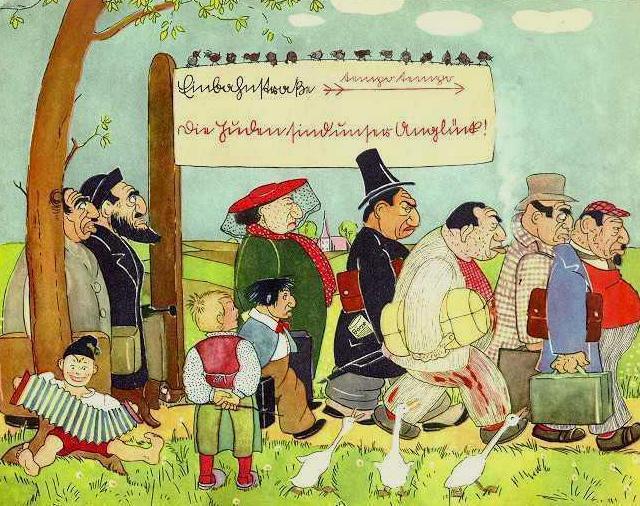
4 minute read
Innocent pictures, innocent words
Hate speech Stereotypes and prejudices
Summary
Advertisement
Participants analyse authentic anti-Semitic cartoons from Nazi Germany to explore different types of hate speech and how it can harm communities.
Materials
Printed images (annexed) or computer and projector;
Procedure
The activity consists of two parts - you can do them together during one workshop session or completely separately. Part two is optional.
Part one
1. Tell the group you will show them pictures from comic books. Ask them to think about answers to the following questions: • What country do the pictures come from? • When were they created (indicative date)? • Who are they depicting? • What do you think of them? 2. Show the participants the images (annexed). It is best to display them as a presentation on a wall or screen. Then ask the participants to answer the questions above.
Note: Images can be difficult to understand because they come from a different historical and social context. The aim of this part of the activity is to collect ideas from the participants. You should not judge the accuracy of their statements, but you can ask them to justify their opinion.
3. After this part of the activity, inform the participants that the pictures come from before World War II and were produced in Nazi Germany. These cartoons were used in schools as part of the educational process of children and youth. During social or geography lessons, these comic books were used to encourage young people to take concrete
actions against the Jewish population. This propaganda used in the educational process was to show a dehumanized image of the Jew as someone who is not worthy of life. The originator of such an approach was Julius Streicher, who started to publish similar comic books in his newspaper. Then they were transferred to school textbooks. Streicher tried to create an image of the Jew as a subhuman, who is a threat to the German nation. The pictures depicted, for example, sexually aroused obese Jews using beautiful and young Aryan women, merciless Jewish homeowners who bully German tenants, dirty Jewish butchers, rich Jews who ignore the economic crisis, handsome and athletic Aryan men and fat and scruffy Jewish men. In one of the textbooks where the cartoons were placed, three examples of actions to be taken were given: throw Jewish children out of school, forbid Jews to use public places (such as parks), throw them out of the country. Such propaganda proved effective and was part of the process that led to the extermination of the Jewish population. 4. Invite the participants to discuss, using the debriefing questions provided below.
Part two (optional)
1. Ask the participants if they have encountered pictures, comics or writings on public spaces that offend people because of who they are, e.g. they are representatives of different minorities, have different views or look different. 2. Choose together a few examples of hate speech (mentioned by the participants) and ask participants to discuss them. You can do it in smaller groups. 3. Finally, ask participants to present their analysis of hate speech examples.
“Innocent pictures, innocent words” was originally published in Polish in: Wszyscy ludzie rodzą się wolni i równi - pakiet materiałów edukacji praw człowieka, Warszawa 2017: Amnesty International
Debriefing questions
PART ONE:
• Why did people in Nazi Germany believe in such or similar propaganda? • What stereotypes about Jews were perpetuated through comic books?
What prejudices did they lead to? • Can images be considered hate speech and why? Would images be more impactful in spreading hate and why? • Do you know similar examples (of images) from your life experience?
Who do they target? What impact do they have on young people? • What can you do if you see hateful images, e.g. on social media?
PART TWO:
• What stereotypes are represented in the given examples? • Who are the people affected by the example of hate speech? • Who is/may be their author (the perpetrator of hate speech)? • How does it make people feel? • What do the perpetrators want to achieve? • Why is this hate speech? • Is that a crime? • What can you do about it? • Questions for final debriefing: • Which elements of the activity were the most difficult for you and why? • Where do stereotypes and prejudices come from? • Can pictures or writings on public spaces be dangerous? For whom?
How do you think people under attack feel? • What conditions must be met for the content to be classified as hate speech? • How can hate speech lead to hate crimes? • How can you counteract hate speech? What can you do?
Annex







